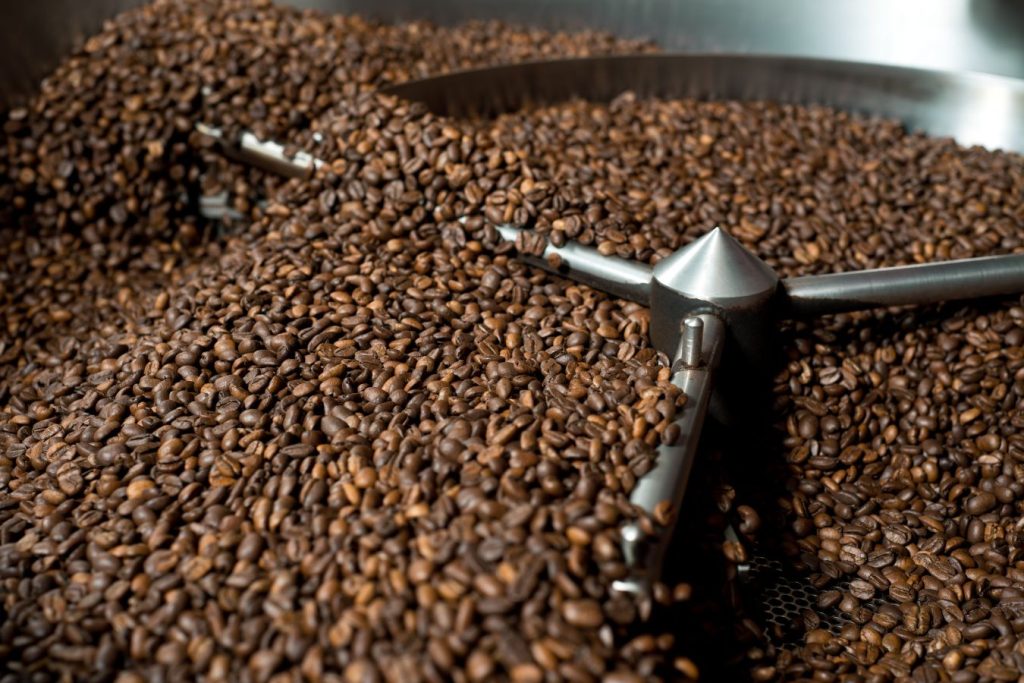Coffee Roasting Terminology. Knowing the words used in the coffee roasting industry will help you impress overseas employers. So, what are you waiting for? Join Helena in the article below to learn about the professional words commonly used when roasting coffee.
1 – In terms of coffee roasting equipment and tools
A roaster with a revolving drum for stirring coffee beans is known as a drum roaster.
A coffee roaster that works on moving hot air over the coffee beans is known as a fluid bed roaster.
An afterburner is a device used to remove smoke and aromas produced during the roasting process.
Bean Probe: A device built inside the roaster that measures the temperature of the outside of the coffee beans.
Direct heat conduction through a substance is referred to as conduction.
Convection is a heat transfer method that relies on the movement of air.
2 – Coffee beans, a term typically used in the basic processing process
Acids: Acids found in coffee beans, such as acetic, citric, malic, tartaric, and phosphoric, contribute to the variety of flavors found in coffee.
- Coffee has been aged: This coffee has an earthy, peppery flavor and is a perennial favorite.
Coffee beans are dark on the interior owing to pests and mildew.
The outer covering of silk on the coffee bean scraped off during the roasting process is known as chaff.
- Furans: These are the components that give coffee its flavor.
- Wet Process: Before roasting, wet preparatory processing of coffee cherries into green coffee.
3 – A glossary of terms used in the coffee roasting process
Bean Temperature: During roasting, the temperature outside the coffee surface.
Roasting Degree: The degree to which coffee has been roasted.
The stage in which the coffee absorbs the heat source is called endothermic.
Exothermic reaction: Exothermic reaction happens during the first and second explosions.
During roasting, there is a crack.
Roasted Flavor: The aroma emitted during the roasting process.
Trigonelline: This is the compound that gives coffee beans their bitter flavor, and it decreases with darker roasting.
During the roasting process, the surface of the coffee will be burned, making the coffee bitter to drink.
Scorching: When using too much heat in the early stages of roasting, scorch marks form on the coffee surface.
Tipping: The use of too high heat at the moment before the second burst begins causes a scorch mark on the surface of the coffee.
Caramelization: This is a roasting procedure involving sugar; the more caramelized the sugar is, the less sweet it is, but the more complex the coffee flavor becomes.
The Maillard Reaction is a chemical reaction between the reducing sugar group and the amino acid during the roasting process, resulting in the color change of the coffee beans.
Strecker Degradation: When dark roasting causes amino acids to interact with carbon active substances in a humid environment, CO2 and aldehyde are produced…
Pyrolysis is the chemical process of breaking down lipids and carbs to produce coffee bean oil.
4 – The quality of the coffee after it has been roasted
- City Roast: After the first burst of roasting, the roast is removed first, preserving the flavor attributes of the coffee beans, and is commonly used for filter coffee.
- After the first blast, which lasts 40 seconds to 1 minute, the roast level is eliminated. To boost flavor complexity, coffee beans are further refined.
- Full City Roast: The roast is removed just before the second explosion, leaving the coffee beans somewhat greasy on the surface; this roasting degree is ideal for preparing Espresso coffee due to the balance of sweet, bitter, and sour characteristics.
- The roasting level is removed for the second explosion for more than 1 minute, at which point the surface of the coffee beans has a lot of oil, and the prepared coffee has a strong bitter taste, no longer sweet and sour.
- Quakers: Unripe coffee beans or a lack of nutrients cause the coffee beans to have brighter color when roasted, contain less sugar, and have a less pleasant flavor than regular beans.
- Roast Errors: Errors in the roasting process, such as tilting, burning, and so on, cause coffee to smell bad when consumed.

